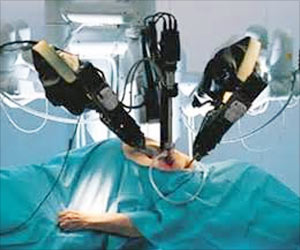Highlights
- Harvard University professors develop first autonomous and completely soft robot.
- This small robot is 3D printed and untethered.
- The autonomous and soft machine can revolutionize medicine.
Then:
The electric board and circuits were always rigid for robots while the soft robots that were developed earlier wired with hard components or attached to an off board system.
Now:
The soft robots that have been developed by these Harvard University professors do not have circuits and electric boards and are untethered. This allows greater flexibility and they can perform tasks with dexterity and precision without a rigid exoskeleton.
Octobot
Octopuses have always been at the epicenter in the field of robotics as they can perform great feats of dexterity without an exoskeleton. This has inspired engineer to try and build a similar mechanism that is strong and can perform tasks with greater skill.
Talking about the softbot developed by these researchers, called Octobot, Lewis adds,"Through our hybrid assembly approach, we were able to 3D print each of the functional components required within the soft robot body, including the fuel storage, power and actuation, in a rapid manner. The octobot is a simple embodiment designed to demonstrate our integrated design and additive fabrication strategy for embedding autonomous functionality."
The fuel for this robot is hydrogen peroxide which is converted into gas after a reaction takes place in the bot. This pneumatic based robot allows the gas to enter its arms, inflating it into a balloon. According to post doctoral fellow Michael Wehner, a reaction between hydrogen peroxide and platinum gives rise to a simple reaction that results in a source of energy, allowing the researchers to replace rigid fuel sources.
The reaction is controlled by microfluidic logic circuit that controls when the hydrogen peroxide should be converted to gas.
The process of developing the robot is based on simple principles that have been found to be highly effective in building a template that is soft.
Medical Robotics
Medical robotics is an interesting field that supplements medical science with precision support from carefully designed robots. Such robots are used in a variety of capacities that aid in better support to patient care and surgeries.
- Surgeries: Robots are currently used to conduct surgeries or help doctors carry them out. These robots have been found to be accurate, requiring smaller surgical openings.
- Robots in Telesurgery: The surgery is not programmed into the robot but the doctors provide instructions in real time.
- Laboratory Assistants: The robots are used to diagnose various medical conditions by conducting laboratory tests on samples.
- Patient Assistant: This is one of the most sought after version but it hasn’t yet been fully realized. This type of a robot is hoped to help in patient care.
References:
- The first autonomous, entirely soft robot - (http://www.eurekalert.org/emb_releases/2016-08/hjap-tfa081616.php)











